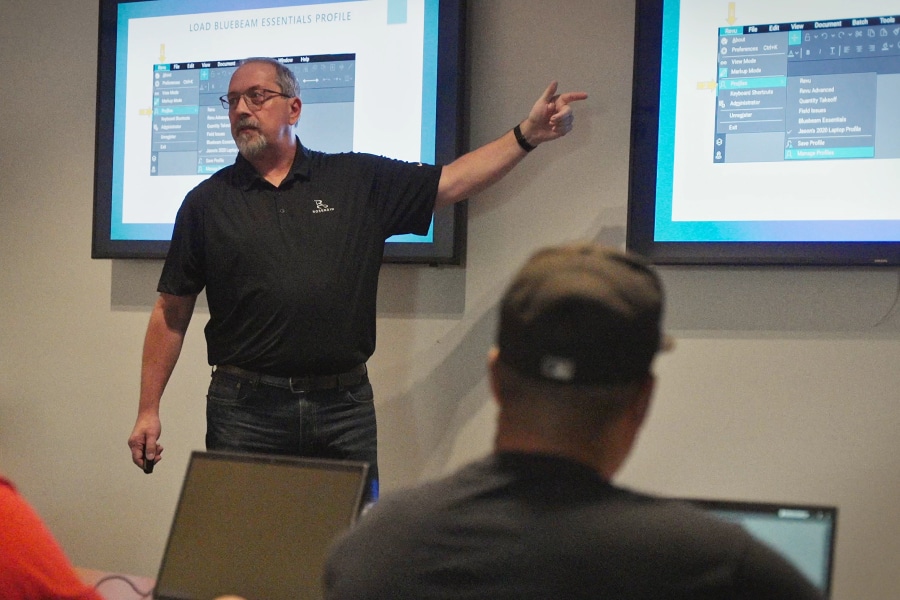
Jason McCarty knows what it means to hit rock bottom when managing a project.
A third-generation electrician from Portland, Oregon, McCarty thought his career was on the fast track when he joined the International Brotherhood of Electrical Workers (IBEW) Local 48. After completing a five-year apprenticeship in 1998, he became a journeyman electrician, ready to leave his mark on Oregon and Washington’s booming construction industry.
But when McCarty, now a field development trainer with electrical contractor Rosendin, stepped into his first leadership role as a foreman, managing crews and coordinating projects, his world flipped upside down.
The skills that made him a great electrician—attention to detail, technical knowledge and hard work—weren’t enough to handle the new challenges of managing people and leading complex projects.
“At 28 years old, I felt like I had failed miserably,” McCarty said. “The job had lost 25%, and I was losing a lot of sleep at night. Most field leaders I ran into had the same experience—no leadership training. We were great electricians, but we weren’t prepared to lead.”
McCarty’s story is one of resilience, adaptation and innovation. Through his struggles, he not only found his footing but also helped reimagine how tradespeople approach leadership and technology in the workplace.
Mastering the Craft: Building a Foundation in the Trades
McCarty’s career began like many in the trades: with a strong apprenticeship program. For five years, he learned the intricacies of electrical theory, installations and safety practices. By the time he became a journeyman, he was technically proficient and confident in his abilities.

However, when the opportunity came to step into a foreman role, McCarty quickly realized that technical skills weren’t enough. His apprenticeship hadn’t prepared him to lead teams or collaborate across trades. He struggled to juggle the demands of planning, communication and managing people.
“The apprenticeship does a great job of teaching us how to be electricians,” he said. “But it doesn’t teach you how to manage people or coordinate with other trades.”
The Turning Point: Discovering Bluebeam
McCarty’s career took a pivotal turn in 2016 when he was introduced to Bluebeam, a PDF markup and collaboration tool designed for construction professionals. Tasked with planning and detailing two massive tower projects, McCarty and his team were handed the software with minimal training and vague instructions.
“At first, we were completely lost,” McCarty said. “After a couple of days, my colleague and I looked at each other and said, ‘Do you know how to do this?’ We didn’t, and we felt like we’d been set up to fail.”
Despite the rocky start, McCarty and his team began to uncover Bluebeam’s potential. The ability to create detailed visual plans, adjust line widths and colors and even calculate material counts revolutionized their approach to project planning.
“This is exactly what we might’ve dreamed of back then,” he said. “If we made a mistake, we could go back and adjust. It was a game-changer.”
Leadership Through Technology
Bluebeam didn’t just streamline McCarty’s projects; it also became a cornerstone of his leadership style. The software’s ability to provide clear, visual instructions improved communication with his team, reducing errors and boosting efficiency.
“A visual is so much better than just verbal instruction,” McCarty said. “With Bluebeam, we can leave behind a document that the team can refer to, ensuring they have the best possible guidance, even if I’m not there.”
David Santiago, a QA&QC site lead with Rosendin and one of McCarty’s trainees, was particularly impressed by the tool’s customization features. “It was mind-blowing,” Santiago said of Bluebeam. “As you customize your toolset, it counts everything for you. You can’t get easier than that.”
Paying It Forward: Mentorship and Empathy
Today, McCarty is as passionate about mentoring others as he is about his own success. Having faced his fair share of challenges, he’s committed to helping other tradespeople navigate the complexities of leadership and technology.
“For people in the industry, it’s important that those giving them instruction know the world they live in,” he said. “I’ve made mistakes. I’ve struggled. That experience helps me connect with others and show them they can succeed.”
McCarty’s goal is to inspire confidence in others. “I love seeing that light bulb moment when someone realizes, ‘I can do this. We’re going to make it,’” he said. “People have so much potential, but they give up too early. I want to change that.”
The Future of the Trades
McCarty’s journey illustrates how innovation and leadership go hand in hand. By embracing tools like Bluebeam and focusing on the human side of leadership, tradespeople can not only excel in their craft but also thrive as leaders.
For McCarty, it’s about more than just success—it’s about making a difference.
“I don’t like to see people struggle,” he said. “Even if I don’t know everything, I’ll still answer the phone and help where I can. That’s what drives me.”










